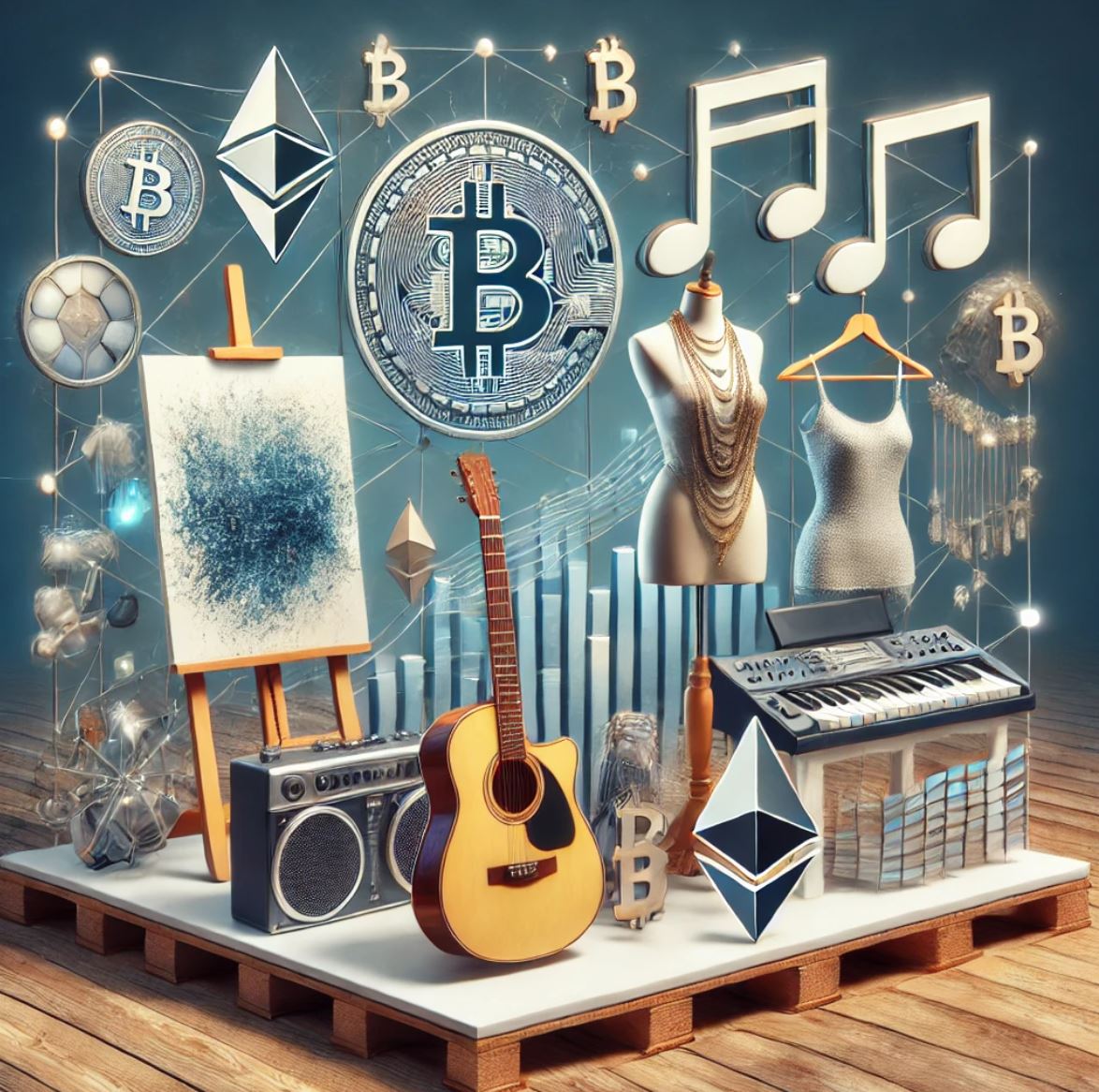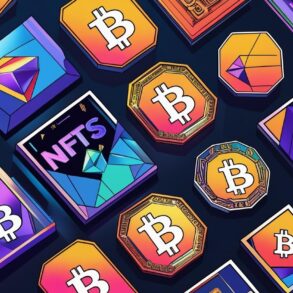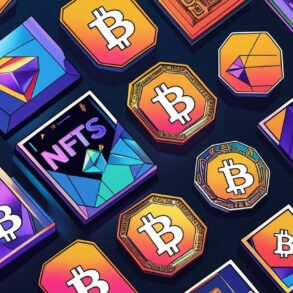
Introduction
Cryptocurrency has evolved far beyond its origins as a digital currency. Today, blockchain technology and crypto assets are shaping entire industries, often in unexpected ways. While finance and trading were the first domains where crypto made its mark, it’s now finding new homes in fields like art, music, and fashion. Many are surprised to learn just how deeply crypto is integrated into these creative worlds, providing artists, musicians, and designers with unique ways to create, share, and sell their work.
In this article, we’ll explore the surprising ways cryptocurrency is transforming these industries and what it means for both creators and consumers.
The NFT Revolution: Cryptocurrency’s Impact on Art
When it comes to art, the most significant shift has come from Non-Fungible Tokens (NFTs). NFTs are unique digital tokens that represent ownership of specific items on the blockchain. For artists, this means they can create digital works and sell them as exclusive pieces, providing verifiable ownership for buyers—a critical shift in how digital art is valued and traded.
Why People Are Drawn to NFTs as Digital Collectibles
NFTs have created a new kind of ownership and collecting culture that differs from traditional art in several ways:
-
Verified Ownership: Blockchain technology allows NFTs to prove authenticity and ownership in ways that physical art cannot. While a physical painting can be forged, an NFT’s blockchain record is permanent and transparent.
-
Scarcity and Exclusivity: With digital art, there’s potential for limitless copies. NFTs enable artists to limit the number of editions, creating scarcity and value. Collectors enjoy knowing they own something unique or part of a limited collection, similar to a rare print in the physical art world.
-
Digital Status and Identity: Owning a well-known NFT has become a status symbol, much like displaying a prized painting at home. Some people even display their NFTs on social media profiles, representing their identity and taste in the digital world.
-
Direct Connection with the Artist: NFTs often offer perks beyond ownership, like behind-the-scenes access to an artist’s process or invitations to virtual events. This direct connection with the artist enhances the value of each NFT for collectors.
How NFTs Are Redefining Art Markets and Distribution
The NFT boom has redefined how art markets operate. Traditional art markets are limited by galleries, auctions, and geographic location, but NFTs open up a global marketplace. Here’s how:
-
24/7 Marketplaces: NFT platforms like OpenSea and Rarible operate around the clock, allowing artists to sell and collectors to buy at any time, creating an open market not bound by physical spaces or business hours.
-
No Middleman: Artists can sell directly to collectors, bypassing the need for galleries and agents who would typically take a percentage of the sale. This means more income goes directly to the creators.
-
Global Reach: Digital art can now reach audiences globally, allowing artists to find collectors across different countries and cultures, which was harder to achieve in traditional markets.
The Role of Cryptocurrency in Music: Creating Direct Connections with Fans
The music industry has long been dominated by intermediaries—labels, streaming services, and distributors—who often control how much artists earn. Blockchain and cryptocurrency are helping musicians regain control by offering direct ways to share music and connect with fans.
How Musicians Are Using NFTs to Engage Fans
-
Direct Album Sales and Exclusive Tracks: Musicians are selling albums, unreleased tracks, and exclusive content as NFTs. This cuts out platforms like iTunes or Spotify, allowing musicians to keep a larger share of profits.
-
Virtual Concert Tickets and VIP Experiences: By selling VIP passes or concert tickets as NFTs, artists are creating unique experiences for fans. NFT holders might get access to private virtual events, exclusive live streams, or even in-person perks like meet-and-greet opportunities.
-
Fan-Owned Royalties: Some musicians are exploring models where fans can own a share of a song’s royalties by purchasing an NFT. This allows fans to share in the artist’s success, receiving a portion of future royalties every time the song is streamed or sold.
Enhancing Fan Engagement and Loyalty through Crypto
Crypto has introduced new ways for artists to reward their most dedicated fans and build loyal communities. With token-based systems, artists can create communities where fans get exclusive access or rewards:
-
Token-Based Fan Clubs: Artists are creating fan clubs where members hold a specific token (often an NFT) that grants them access to perks, such as unreleased songs, voting on album artwork, or special merchandise.
-
Incentives for Sharing: Artists can reward fans who actively share and promote their work. By tracking fan interactions on the blockchain, musicians can issue crypto rewards, turning fans into ambassadors.
-
Collaborative Experiences: Through decentralized platforms, artists and fans can collaborate in unique ways, from creating fan-inspired merch to writing and producing songs together. These experiences build deeper relationships between artists and fans.
Cryptocurrency in Fashion: Digital Wearables and Virtual Experiences
Fashion is rapidly evolving with the introduction of digital wearables, virtual fashion shows, and blockchain-based authentication. Cryptocurrency and blockchain technology are allowing fashion brands to innovate in ways that appeal to a digitally savvy audience.
Digital Fashion: The Rise of Wearables in Virtual Worlds
As virtual spaces like the metaverse grow, so does the market for digital fashion. People are willing to spend money on digital wearables to dress their avatars or showcase their style online, similar to buying physical clothing.
-
Exclusivity in Virtual Spaces: Fashion brands are launching limited-edition digital wearables that people can use in virtual worlds like Decentraland or gaming platforms. Owning a rare digital item provides status in these online spaces.
-
Augmented Reality (AR) Fashion: Some brands allow customers to “wear” digital fashion items in AR, which they can use for social media content. Gucci’s virtual sneakers, for example, can be worn digitally and displayed in AR, bringing fashion into the digital age.
-
Sustainability Benefits: Digital fashion eliminates material waste and reduces the environmental impact of production. This appeals to eco-conscious consumers who want to enjoy fashion without contributing to fast fashion’s environmental toll.
How Blockchain Is Enhancing Authenticity in Fashion
Blockchain is also helping the fashion industry address authenticity and counterfeiting issues:
-
Verified Ownership for Luxury Goods: By placing information about luxury items (like handbags or shoes) on a blockchain, brands can ensure authenticity and give buyers a digital certificate of ownership. Buyers can scan a QR code to verify that a product is genuine.
-
Tracking Supply Chains: Blockchain allows brands to track their supply chains transparently, providing proof that products were ethically sourced. This is particularly valuable for consumers who prioritize fair trade and ethical practices.
-
Resale Market: Blockchain can enhance the resale market by proving authenticity. When a luxury item is resold, the buyer can verify its origin and ownership history on the blockchain, making it easier to trust the resale market.
DAOs: Empowering Creators and Artists with New Opportunities
Decentralized Autonomous Organizations (DAOs) are also playing a big role in supporting creators. DAOs are community-led organizations with rules and operations encoded on the blockchain. For artists, musicians, and designers, DAOs offer funding, collaboration, and creative independence.
How DAOs Benefit Creators in Art, Music, and Fashion
-
Collaborative Funding Models: DAOs allow communities to pool funds and support artists collectively. Instead of seeking loans or investment from corporations, artists can gain support directly from fans and collaborators.
-
Creative Collaboration: DAOs give artists a platform to connect with other creators and build community projects. Artists, musicians, and designers can come together in DAOs to co-create and even co-own projects.
-
Community Ownership: DAOs operate democratically, meaning that all members have a say in the organization’s decisions. This empowers creators to take part in major decisions without needing to rely on corporate interests.
Environmental Impact: The Sustainability Debate in Digital and Physical Worlds
As digital assets grow, so do concerns about their environmental impact. The energy consumption of blockchain, particularly for Proof-of-Work models, is significant. However, the environmental implications of digital fashion, art, and music differ from physical production in unique ways.
Sustainability Benefits of Digital Assets in Creative Industries
-
Lower Material Waste: Digital art and fashion do not produce physical waste, making them inherently more sustainable than physical goods. This is especially relevant in fashion, where digital wearables offer an eco-friendly alternative to fast fashion.
-
Reduced Transportation Emissions: Unlike physical goods, digital assets don’t require shipping or physical storage, reducing emissions. This helps reduce the carbon footprint associated with traditional production and transportation.
-
Blockchain Advancements for Eco-Friendly Solutions: The blockchain industry is actively working on eco-friendly alternatives, such as Proof-of-Stake consensus mechanisms, which consume significantly less energy than traditional Proof-of-Work models.
The Future of Crypto in Creative Industries: What’s Next?
The influence of cryptocurrency on art, music, and fashion is still in its early stages. Here are some exciting trends to look forward to:
-
Integrated Digital Identities in the Metaverse: As virtual worlds grow, people will increasingly seek digital identities that represent their personal style, preferences, and values. Fashion, art, and music will play a huge role in building these identities, making crypto an essential part of the metaverse experience.
-
Enhanced Virtual Experiences: Musicians and artists are already using virtual reality for immersive experiences. Expect more events and exhibitions that allow fans to interact with art and music in unique, personalized ways within virtual environments.
-
Broader Adoption of NFTs for Everyday Use: As the technology matures, NFTs may become a standard way for people to interact with media, from streaming music to buying fashion accessories. NFTs could unlock new ways for consumers to personalize their digital spaces and experiences.
-
Increased Focus on Environmental Solutions: Blockchain technology will likely continue to evolve toward sustainability, with more brands choosing eco-friendly protocols and developing solutions that allow digital assets to be enjoyed without a high environmental cost.
Conclusion: A Creative Future with Cryptocurrency
The impact of cryptocurrency on art, music, and fashion is nothing short of revolutionary. From NFTs redefining ownership in the digital age to DAOs supporting collaborative creativity, crypto is opening doors for artists, musicians, and designers. As the lines between digital and physical continue to blur, the way we interact with and value creative work is likely to change forever.
Cryptocurrency is much more than a financial tool; it’s a means for creative expression, connection, and community. Whether you’re a creator, collector, or simply curious, this is an exciting space to watch.Are you ready to explore the world of crypto-powered creativity? Leave a comment with your thoughts or subscribe to our newsletter for the latest insights into how cryptocurrency is reshaping art, music, and fashion.
This post was originally published on this site be sure to check out more of their content








